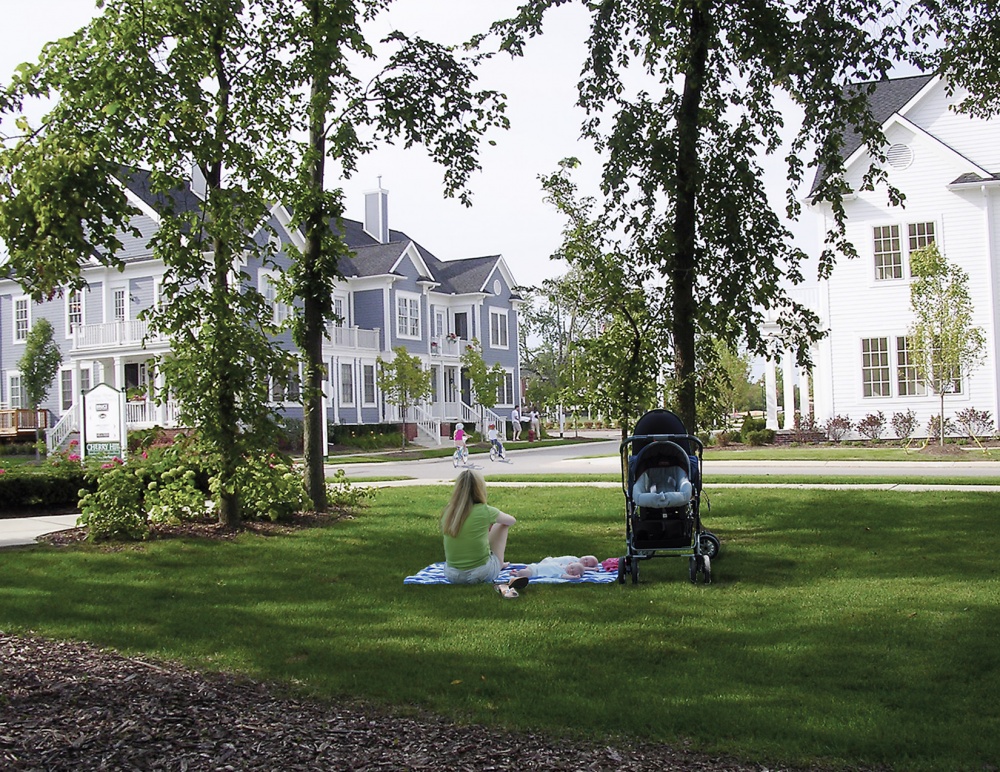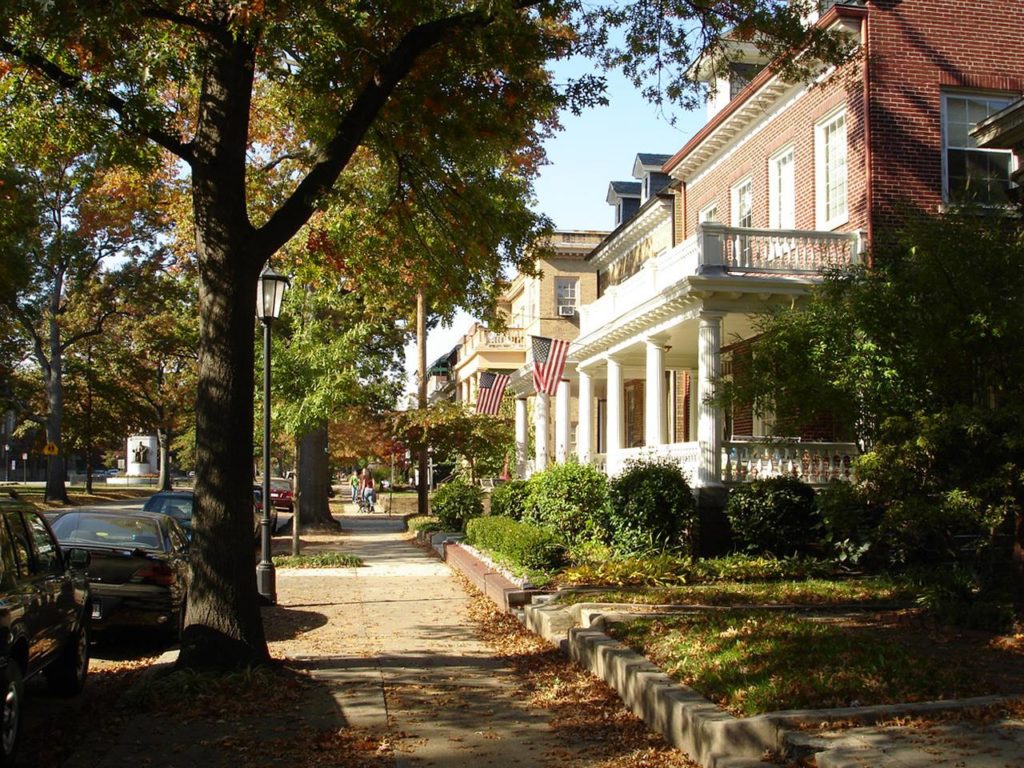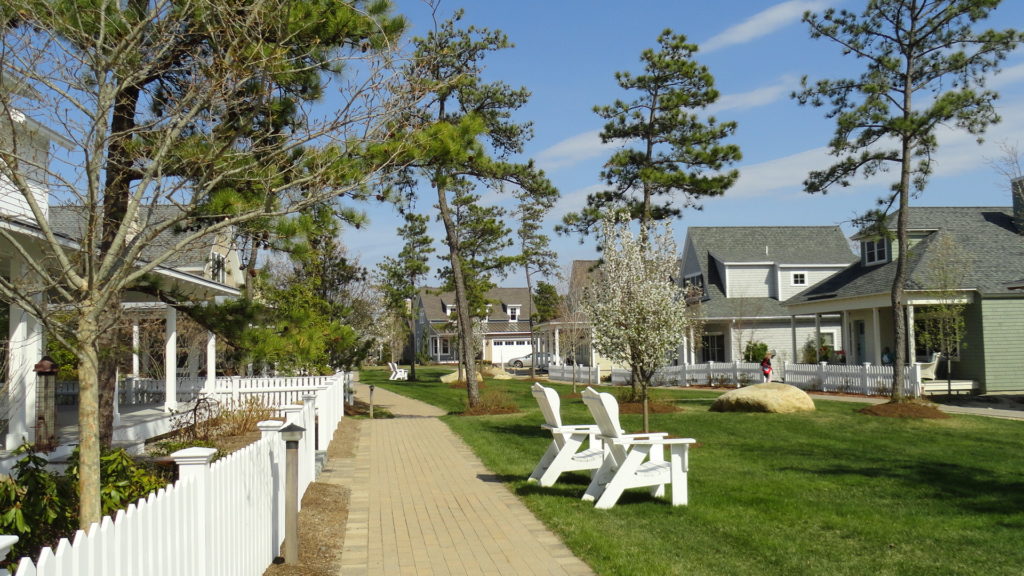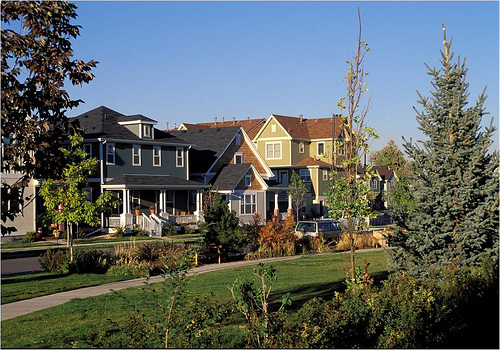Ahhhhhh, the great outdoors! Who doesn’t enjoy being outside on a beautiful day? Everyone enjoys visiting public parks, playgrounds, ballfields, plazas, and beautifully planted gardens. But whether we create new or rejuvenated communities, how are developers and builders integrating open space into their planning?
Most jurisdictions require dedicated open space as a percentage of site development through local zoning ordinances. When used well, that “percentage” of open land can generate tremendous value in the community.

For centuries, towns and cities inherently knew open space was the principle form-giver of urbanism. Plazas, courts and parks were places where public and private interests met. Today, we have similar opportunities to give shape to the neighborhoods in which a majority of housing consumers and renters want to live. A recent National Association of Realtors survey indicates, “sixty percent of Americans want to live in neighborhoods with stores and services within easy walking distance.” What better way to accommodate the desire for “walking to places,” than by creating the types of places people want to walk to?

Great streets that accommodate the pedestrian, bicyclist, and motor vehicle become the network upon which to interconnect outdoor space with the private realm. A big step (pun intended) towards building community begins with creating streets people once again feel compelled to walk along.
If the street is the primary public space, how can we frame its edge to provide a transition between the public and private realm? In commercial or town center applications, this occurs fairly simply: The face of the office building is the edge and, beyond the front door, a semi-public lobby or atrium gives way to private offices. In the case of a restaurant or café, a sidewalk seating arrangement serves as a transitional space between pedestrians on a public sidewalk and the private dining room of the establishment. Similarly, when we look at the various residential buildings used in the creation of a true neighborhood, building setbacks, front yards, and porches all begin an interplay with the public street.

The front porch may be the most important linkage between public and private. When properly executed, the front porch, terrace, or stoop elevates far enough above the height of the sidewalk to provide a sense of security, transition, and privacy from the public street, yet is comfortable for easy conversation with pedestrians on the sidewalk. Porches become an extension of outdoor living rooms, allowing neighbors to interact with neighbors. There is a sense of being part of a community.
A tour of older established neighborhoods often serves as a good example of best practices.
Many master planned communities use existing natural features to create useable open space. Waterways, tree stands, and topographic obstacles can all be integrated into a network of community openness. In larger communities, open space should be varied between natural and formal. Small pocket parks within a larger community can offer a seamless transition from one housing type to another. Larger parks provide opportunities to vary lot sizes around the amenity, utilizing the openness to relieve the density of smaller lots and attached housing.

Each special outdoor environment should have a unique character and purpose, yet all should work closely together to interconnect through a network of paths, sidewalks, and streets. The scale of each space should be appropriate to the size and number of dwellings to be built upon it. Lot prices should reflect the special nature of their location within the master plan. Lots that front on special places deserve premiums for their location; however, the value of well-designed open space goes well beyond the lots directly upon it.
Communities of all size and scale can benefit greatly from flexible, useable open space. The best places begin with a solid framework of open spaces and a network of streets, paths and sidewalks to connect them. Abundant examples and prototypes exist in America’s great cities and neighborhoods. Enjoy them as you think about creating the next great neighborhood!

